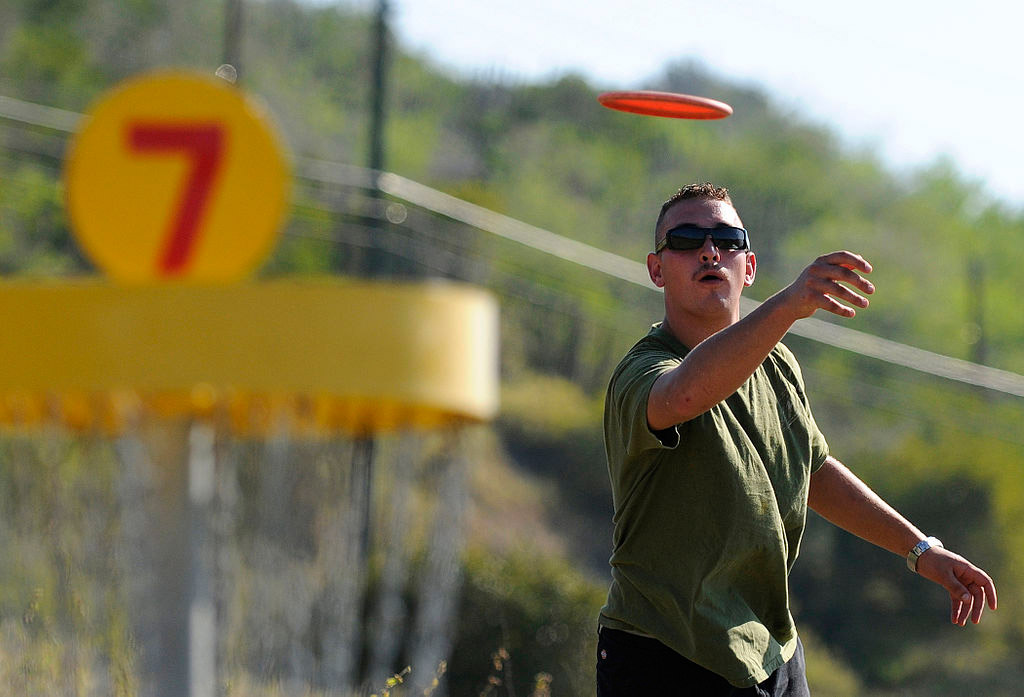
Staff Picks: Roller Derby, Disc Golf and Kendo provide active alternatives
Roller Derby:
I started playing roller derby because my job stressed me out. I work long hours and wanted a hobby that didn’t have anything to do with newspapers.
Roller derby — with its violence and lack of men — seemed like a perfect fit. I bought a pair of roller skates, boiled a mouthguard and started skating. And I loved it.
One of the best parts about starting a new sport is how quickly you learn. No one was on their high school roller derby team, so everyone starts at a near level playing field. I was under the age of 10 last time I put on a pair of roller skates, but within a couple months I could jump half a foot in the air, whip a teammate around the corner of a track and stop at the blow of a whistle.
I recommend roller derby to women because I think it’s one of the most body-positive sports out there. I’ve struggled to learn skills at practice, but I’ve never felt like I would be a better player if I was shorter or thinner. Many sports are naturally suited to people with certain body types, but derby isn’t. It’s a team sport and everyone plays their part, no matter how how tall and thin you are.
Despite being a competitive sport, roller derby encourages women to support and learn from each other. Being in an environment where women are celebrated for being strong and aggressive is very different from any other part of my life. It’s an intense sport, but the rewards are immense.
Roller derby is the only time playing a sport has made me feel better about myself. For many women, that’s a big get.
Try skating a couple laps at Lloyds, and then imagine yourself knocking someone to the ground while doing so. Trust me — it’s a pretty great feeling.
— Kate Jacobson
Disc Golf:
Few sports are as easy, cheap and accessible to play in Calgary as disc golf. The game is played by throwing frisbees, or ‘discs,’ into large metal baskets on a predefined course, following the same rules as ‘ball golf.’
But unlike disc golf’s more popular and pretentious counterpart, the cost to play the sport is within reach for a typical university student. There’s no need for clubs, balls or tee times — all it takes to play a round is a
disc or two, which are easily accessible on a budget. Specialty stores like Don’s Hobby Shop are reliable for the discs, but as the sport becomes more popular, even vendors like Wal-Mart are stocking discs made for the sport.
After you have something to throw, it’s just a matter of finding a course. The city’s best course is at Baker Park in Bowness, a short drive from campus. Thorncliffe and Forest Lawn both have solid courses that aren’t too far from the downtown core.
If you’re looking for a fun day trip, check out the course at Canmore’s Nordic Centre. It is beautiful, but also quite challenging. Be prepared to wander through the forest looking for your discs.
Disc golf is a great game because it doesn’t need much explaining and it’s easy to pick up. Throwing your frisbee down the green towards the basket is a lot of fun, even if you aren’t counting strokes. And once you figure out how to consistently get some distance on the drive, there’s little more satisfying than watching your disc fly a hundred feet or two.
After playing a handful of times you’ll quickly notice significant improvement in your game. It’s pretty rewarding to watch your score go down each round.
Just don’t try catching discs meant for golf. Those things are heavy.
— Jason Herring
Kendo:
Not a lot of students know what kendo is. Even fewer know that there is a club dedicated to the sport on campus. And if they poked their heads into a practice, they would probably leave with more questions than answers. Why are all these people yelling? What’s with the armour? And why are they hitting each other with sticks?
The answer to all of these questions is the same — tradition. Kendo is a Japanese martial art that was developed by samurais to help practise sword combat, but eventually evolved into a modern, competitive sport. But kendo still retains the customs, garb, and mindset of the samurai warriors that created it, making it more than “Japanese fencing.”
Style and form are just as important for scoring points in kendo as actually striking your opponent, with combatants needing to call out their strikes and followthrough with their swings before earning a point. This makes kendo a deliberate yet physically intensive sport, as two fighters wear each other down before one can land a stylish, decisive blow.
But don’t think you can sign up for kendo class, grab a bamboo sword and start wailing on other people. The most important part of kendo is patience, and this is hammered home when you take lessons. You won’t even touch a weapon for the first five or six weeks of class, as fundamentals like footwork and posture are drilled into you repeatedly.
This might scare some people away from the sport, but the payoff is eventually worth the work. Kendo practitioners develop phenomenal core strength, balance, endurance and the mental acuity to defeat an opponent on one-on-one combat.
— Sean Willett
